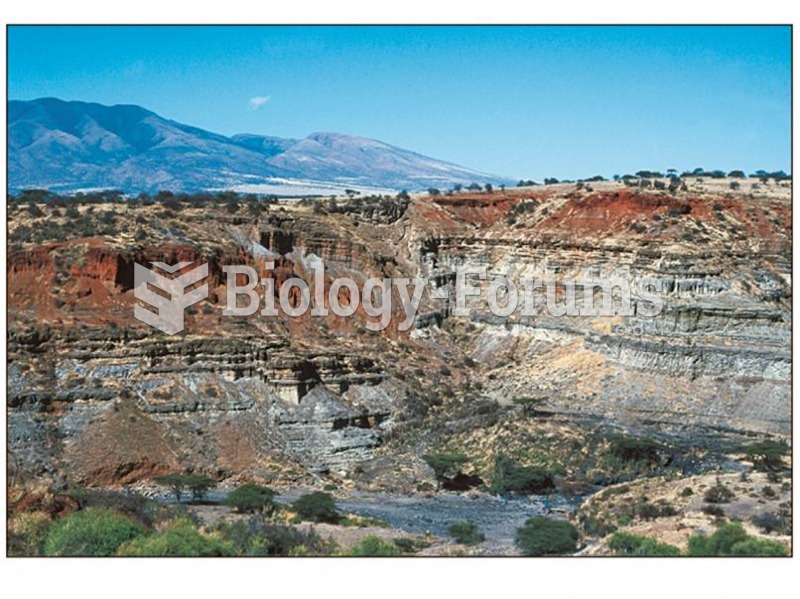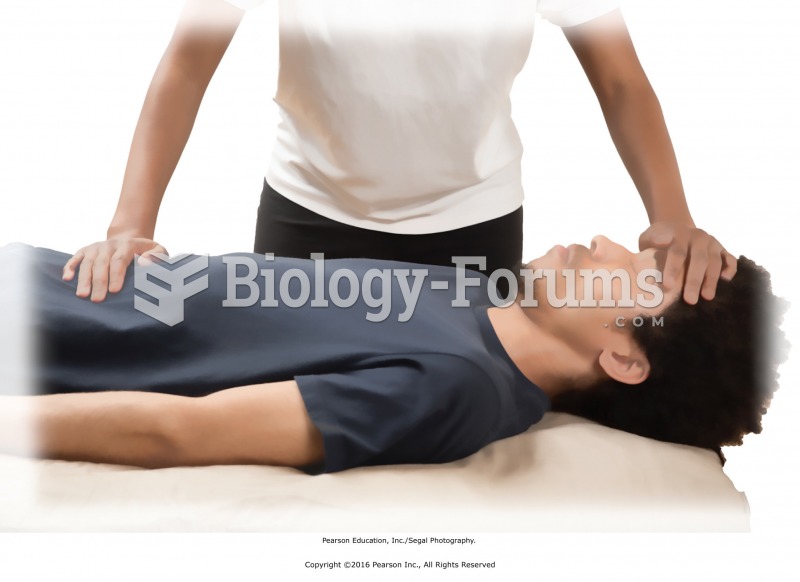|
|
|
Cyanide works by making the human body unable to use oxygen.
All adults should have their cholesterol levels checked once every 5 years. During 2009–2010, 69.4% of Americans age 20 and older reported having their cholesterol checked within the last five years.
Coca-Cola originally used coca leaves and caffeine from the African kola nut. It was advertised as a therapeutic agent and "pickerupper." Eventually, its formulation was changed, and the coca leaves were removed because of the effects of regulation on cocaine-related products.
Excessive alcohol use costs the country approximately $235 billion every year.
As of mid-2016, 18.2 million people were receiving advanced retroviral therapy (ART) worldwide. This represents between 43–50% of the 34–39.8 million people living with HIV.
 Rock layers (strata) usually look like layers in a cake such as these strata at Olduvai Gorge Tanzan
Rock layers (strata) usually look like layers in a cake such as these strata at Olduvai Gorge Tanzan
 Finishing techniques for the back of the body. With the recipient fully draped, gently rock the body ...
Finishing techniques for the back of the body. With the recipient fully draped, gently rock the body ...





